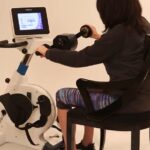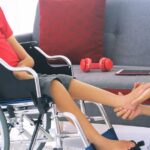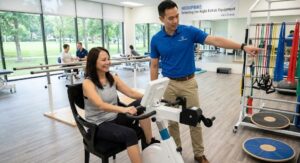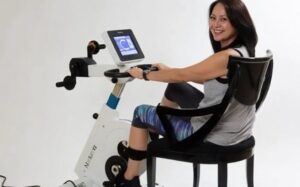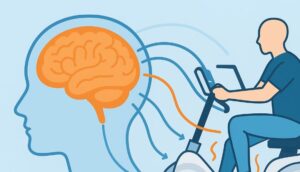
Spasticity is a condition that affects more than 12 million people worldwide because of a variety of chronic diseases and conditions, accidents or deconditioning, particular those particularly those who have cerebral palsy, multiple sclerosis, strokes or traumatic brain or spinal cord injury. For example, nearly 80 per cent of those with CP or MS are affected by spasticity.
Mobility can be difficult for anyone experiencing spasticity. Though their symptoms can vary, nearly all of those with spasticity can benefit from maintaining a level of physical activity. There are ways to include active assistance to help maintain and improve mobility, leading to a variety of health benefits.
What is spasticity?
Spasticity is a disorder that affects muscle control. Muscles in someone with spasticity become abnormally stiff and tight, and affect movement. The condition is caused by an imbalance of signals from the central nervous system to muscles. Spasticity will most often occur in people with conditions cited above, but it also occurs outside of these health conditions.
The effects of spasticity
Spasticity most often presents in a patient’s legs, hips and lower back. It is also possible to show up in other muscle groups. In some people, the effects can be no more severe than stiffness when moving around while many others will experience more serious effects. The level of pain that accompanies spasticity can vary widely. It may be no worse than the feeling of tight muscles or it can be more severe, showing up in painful muscle spasms. When muscles contract and are unable to lengthen, the body will often experience disfigurement and disability.
Benefits of active-assistance range-of-motion exercises
The MedUp V2 bike features an “assisted mode,” whereby movement is assisted by the motor when users cannot complete the pedaling cycle independently. It helps build strength, improve coordination and boost motor activity. Another beneficial feature of this trainer is its spasm recognition software that quickly identifies and releases spasms. Spasticity detection is a tremendous, differentiating feature that provides relief to patients. This bike is ideal for patients with MS, CP or other conditions that have brought on spasticity, greatly improving their overall quality of life.
Though patients will likely be prescribed medications to help treat and combat spasticity, an important part of the process will include muscle movement, including daily activity that focuses on maintaining or increasing their range of motion. In patients with spasticity, muscles and joints are not able to stretch long enough, so employing the help of a person or tool to increase active range of motion can ultimately help improve it over time.
There are several reasons why using an active-assist method is the best option for many people living with spasticity.
Better ability to increase range of motion
When someone performs range of motion exercises by themselves, they’ll quickly reach their maximum range. However, by allowing a partner to help them increase their range just a bit more, studies have shown that, in the long term, muscle movement will improve. If using a helper isn’t possible, there are tools such as therapy bikes that can help facilitate assisted movements.
Increased comfort
Active-assisted movement that works to improve range of motion can result in an increased overalllevel of comfort on a day-to-day basis for anyone suffering from spasticity.
Maintain mobility
People who actively participate in assisted mobility exercises on a daily basis are more likely to maintain their mobility, making things like moving around their home, going to the store and getting outside for walks easier to do without excessive pain.
Opportunity for independence
Independence is something that most people want to hold onto as they age. However, when they have spasticity, it can be hard to do things on their own. A MedUp bike can help people to stretch their active range of motion to encourage their ability to stay as independent as possible for as long as possible.
Improved bowel and bladder function
When people are restricted in their movement by spasticity, they are more likely to experience chronic constipation and urinary tract infections. Active-assist exercises will help people to get moving more which, in turn, will help the reduction of health issues that are prominent in people who aren’t able to maintain regular movement.
Reduces pressure sores
Anyone who is restricted in their movement and confined to a stationary area, like a bed or a chair, is at risk of developing sores if they don’t move their body often enough. This occurs when they are unable to lift and move their legs, arms, hips or torso enough to maintain blood flow.
Active assist benefits spasticity
Though it’s not often possible to cure the symptoms of spasticity, taking part in exercises involving active assistance can offer significant benefits. If it’s not possible to have a partner assist in completing the exercises, there are products, mainly specialized cycle trainers that can support patients.
